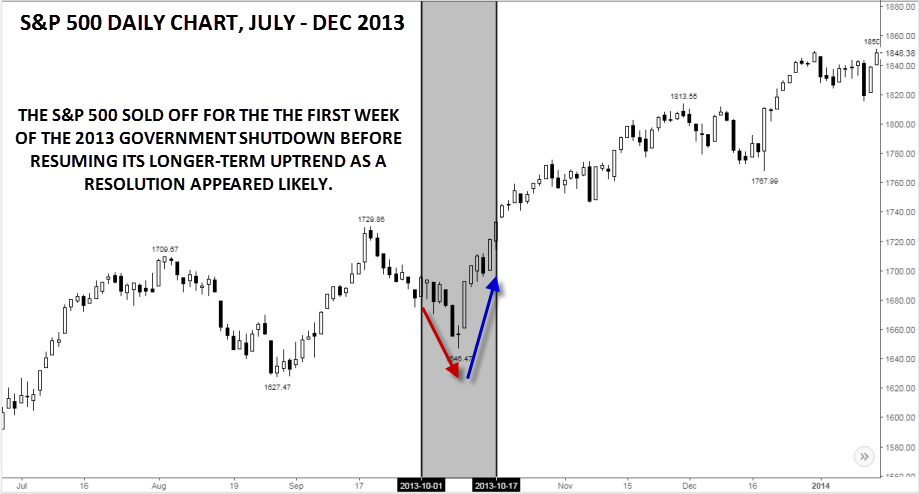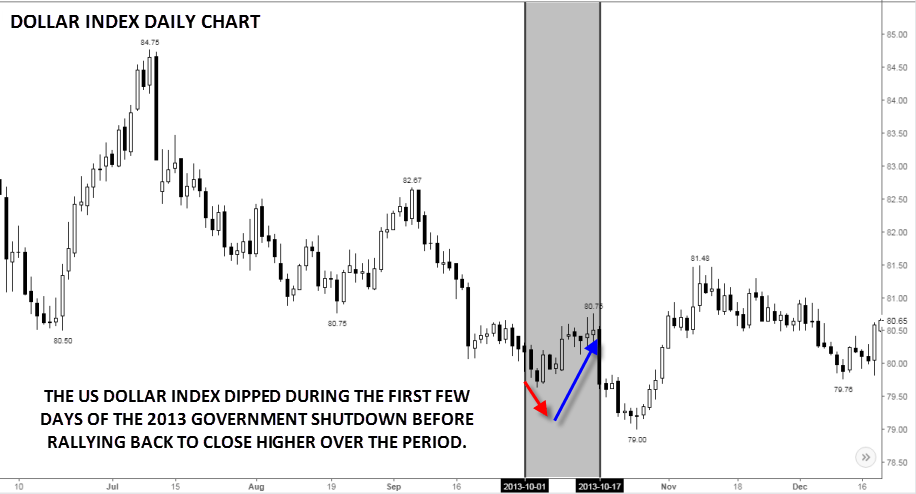A "government shutdown."
It certainly sounds like a foreboding event in a modern developed nation, much less the largest economy on the planet. Surely such an event would be extremely rare?
Looking back at the historical record, that's not actually the case.
Since the current congressional budgeting process was enacted in 1976, there have been eighteen separate government shutdowns (or "spending gaps" as they're called on Capitol Hill). The first six of these actually didn't impact government functioning in any way, but since 1980 all shutdowns have mandated at least a partial shutdown of government agencies.
It's worth noting that not all such shutdowns have been a result of politically contentious debate over which programs to fund; in fact, one shutdown in 1982 took place because congressional leaders were too busy partying at a barbeque and forgot to pass a funding bill on time.
Nowadays though, every issue is hyper-partisan, and the current debate over children's health insurance and immigration is clearly more contentious than a fundraising dinner. As of writing, the US House of Representatives has passed a one-month temporary spending measure to kick the proverbial can down the road, but the bill's prospects in the Senate are looking increasingly bleak. If no agreement is reached by the end of the day, certain government services will shut down at midnight.
So what does this mean for markets?
Based on the continuing uptrend in the stock market, investors are relatively unperturbed. Even the US dollar has stabilized above the key 90.00 level this week, despite increasingly dire headlines out of Washington. While we always prefer to take a "glass half full" outlook, it's worth exploring what could happen to stocks and the dollar if the government is indeed forced to shut down tonight.
For inspiration, we're looking to the most recent spending gap, in October 2013 (before that, the most recent government shutdown took place in 1995). Back in 2013, Republicans refused to vote for a bill that that increased discretionary spending and demanded a one-year delay on rolling out the Affordable Care Act. That shutdown lasted 17 days and involved 850,000 federal workers (40% of the total federal workforce) getting furloughed, only ending when House Speaker John Boehner backed down. The 17-day shutdown was the second-longest since 1980 (behind 1995-1996), providing an example of a bad (we hesitate to say "worst) case scenario.
As they are now, US stocks were in a prolonged uptrend heading into the shutdown. As the prospects of a timely agreement faded, the S&P 500 sold off in the week prior to the shutdown. The selling carried over into the first week of the shutdown as traders braced themselves for a prolonged stalemate, but once an agreement appeared likely, the stock market rallied back strongly, actually finishing the shutdown period higher than where it started.

The US dollar saw a slightly different performance profile over the period. The dollar, which had been in a short-term downtrend ahead of the 2013 shutdown, briefly dipped for the first couple of days before rallying back strongly in the latter half of the government shutdown. Once a deal was announced, the dollar index sold off sharply, perhaps as a result of a fading "flight to quality" bid. Overall the greenback finished the entire two week period modestly lower, in-line with the dominant downtrend at the time.

On the whole, the 2013 government shutdown did not did little to interrupt the established trends in either the S&P 500 or the US dollar. After an initial period of weakness, both assets rallied as a budget agreement grew more likely, though it's worth noting that the buck sold off once an agreement was reached.
Of course, it's impossible to say whether markets would follow the same path if we see a US government shutdown this time around, but this analysis supports prioritizing a trend- and price-based outlook toward markets, regardless of the "news" grabbing all the headlines.
This research is for informational purposes and should not be construed as personal advice. Trading any financial market involves risk. Trading on leverage involves risk of losses greater than deposits.
Recommended Content
Editors’ Picks

GBP/USD rises above 1.3300 after UK Retail Sales data
GBP/USD trades with a positive bias for the third straight day on Friday and hovers above the 1.3300 mark in the European morning on Friday. The data from the UK showed that Retail Sales rose at a stronger pace than expected in August, supporting Pound Sterling.

USD/JPY recovers to 142.50 area during BoJ Governor Ueda's presser
USD/JPY stages a modest recovery toward 142.50 in the European morning following the initial pullback seen after the BoJ's decision to maintain status quo. In the post-meeting press conference, Governor Ueda reiterated that they will adjust the degree of easing if needed.

Gold consolidates weekly gains, with sight on $2,600 and beyond
Gold price is looking to build on the previous day’s rebound early Friday, consolidating weekly gains amid the overnight weakness in the US Dollar alongside the US Treasury bond yields. Traders now await the speeches from US Federal Reserve monetary policymakers for fresh hints on the central bank’s path forward on interest rates.

Shiba Inu is poised for a rally as price action and on-chain metrics signal bullish momentum
Shiba Inu remains strong on Friday after breaking above a symmetrical triangle pattern on Thursday. This breakout signals bullish momentum, further bolstered by a rise in daily new transactions that suggests a potential rally in the coming days.

Bank of Japan set to keep rates on hold after July’s hike shocked markets
The Bank of Japan is expected to keep its short-term interest rate target between 0.15% and 0.25% on Friday, following the conclusion of its two-day monetary policy review. The decision is set to be announced during the early Asian session.

Moneta Markets review 2024: All you need to know
VERIFIED In this review, the FXStreet team provides an independent and thorough analysis based on direct testing and real experiences with Moneta Markets – an excellent broker for novice to intermediate forex traders who want to broaden their knowledge base.